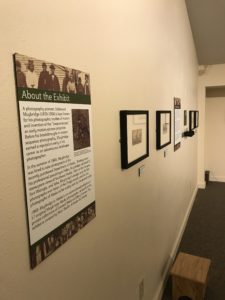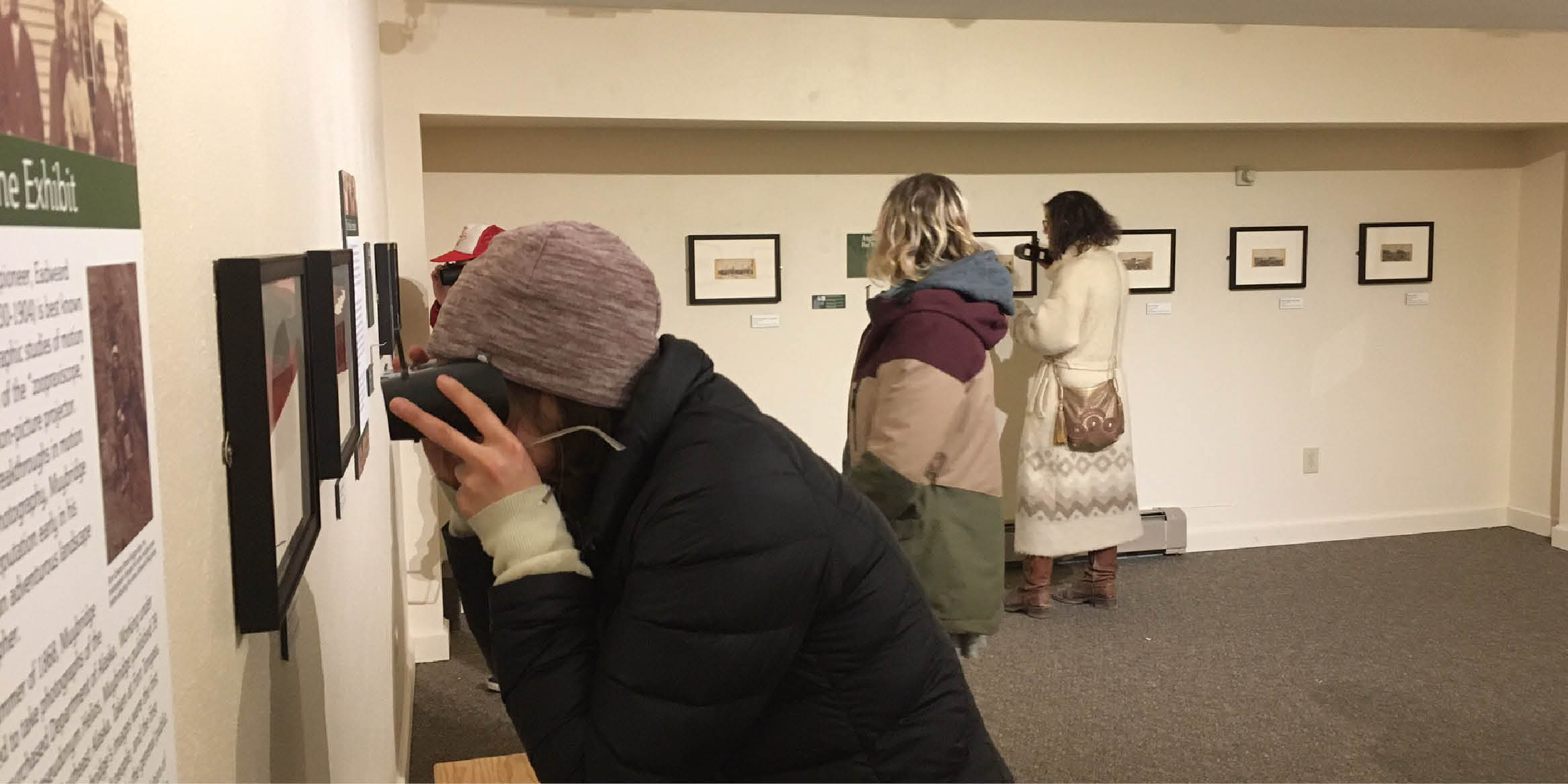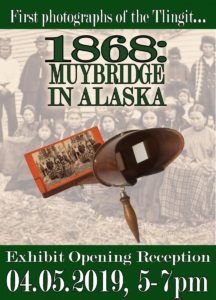2019 Temporary Exhibit
A photography pioneer, Eadweard Muybridge (1830-1904) is best known for his photographic studies of motion and invention of the “zoopraxiscope”, an early motion-picture projector. Before his breakthroughs in motion sequence photography, Muybridge earned a reputation early in his career as an adventurous landscape photographer. In the summer of 1868, Muybridge was hired to take photographs of the recently purchased Department of Alaska during an expedition led by Major-General Henry W. Halleck, commander of the U.S. Military Division of the Pacific. Working under his professional pseudonym Helios, Muybridge published 39 views of Southeast Alaska as stereograms (side-by-side pictures taken simultaneously with a single camera). When seen through a viewer called a stereoscope, the two images merge to create a single three-dimensional image. Taken at Fort Tongass, Fort Wrangle, and Sitka, Muybridge’s 39 sterograms were the first photographs ever taken of the Tlingit people, and the first photographs of Alaska to be widely seen by the general public.
1868: Muybridge in Alaska, was an unprecedented exhibition of 17 original Muybridge Alaska photographs, on loan from the private collections of Leonard Walle and Mary Everson. Using modern TwinScope viewers, visitors had the chance to see the dual stereo views in 3D, as originally intended. The exhibit was curated by Marc Shaffer of Inside Out Media.
This traveling exhibition was supported by the Atwood Foundation, in part by a grant from the Alaska Humanities Forum and the National Endowment for the Humanities, a federal agency, and by a Harper Arts Touring Fund grant from the Alaska State Council on the Arts.


